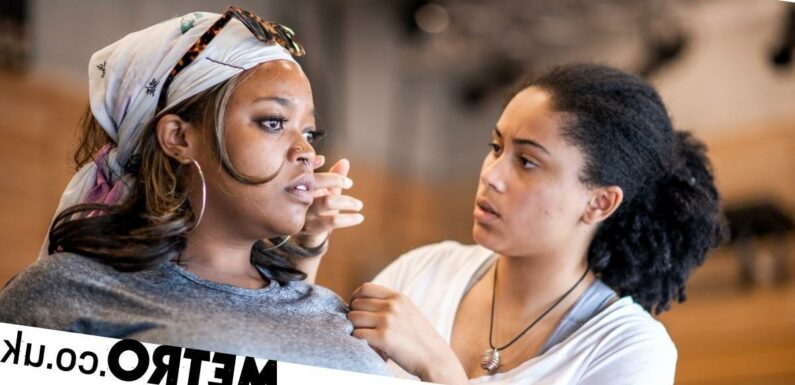
You’d be forgiven for not knowing there were people of colour with high-status positions in the royal court of 16th-century Scotland, but, as the late, great Hilary Mantel once said, history is ‘the record of what’s left on the record’.
Some of those individuals take centre stage in James IV: Queen Of The Fight, a new play from the award-winning Rona Munro. It’s the fourth in her acclaimed series of ‘James plays’, which sheds light on the succession of late medieval Scottish kings, often through the eyes of women.
‘This play unearths a corner of Scottish history that’s largely been either badly written about or not written about at all,’ explains its director Laurie Sansom, who has a theory about why we know so little about these people. But more of this later.
The story is told through the eyes of Ellen and Anne (played by Danielle Jam and Laura Lovemore), two Moorish women of African heritage who find themselves in the court of James IV (Daniel Cahill). It revolves around two major public tournaments that the king stages in order to demonstrate Scotland’s wealth, might and culture.
James, an early Renaissance figure who prided himself on his many skills and interests, would sometimes take part in disguise – showcasing his swordsmanship but not revealing his identity until the end.
In these chivalric tournaments two knights would battle for the hand of the Queen Of The Fight and in this play that position is given to Ellen, one of the Moorish women.
‘James IV had a lot of women in his life and was famous for having affairs with multiple people, and having many children with many people who he also gave positions of power and wealth to,’ says Laurie, who directed the first three James plays and is a past artistic director of the National Theatre of Scotland.
‘So, this is yet another woman he’s setting up in rivalry to his queen (Margaret Tudor), and that’s the cause of quite a bit of tension in the play.’
But how did these Black women find their way to Scotland in the early 1500s? Around the time of the Spanish Inquisition, many Moors were having to leave the Spanish peninsula, where their people had been settled for some 900 years.
Records indicate that some of them were on their way to serve the royal court in England; polyglots and musicians, they were sought-after as ladies in waiting under Henry VII.
But their ship was captured by Scottish pirates, who brought them to Leith. The women probably didn’t know if they were hostages or guests, but James IV, obviously pleased to have got his hands on this prize intended for England, welcomed them into his court.
At the time, another key member of the king’s staff was a man known as Peter The Moor, who is said to have occupied a spin doctor-type role, and played a key part in organising the grand tournaments. He may well have had a Scottish wife and children, too.
‘It starts to tell a different story about how Black people have been in Scotland for much longer than is popularly known,’ says Laurie. ‘They were in positions of high status and positions of power, and they came from very educated, sophisticated courts. We’ve had to work through lots of counter-narratives that make assumptions about who these people were that are really based on prejudices.’
One vital example of that counter-narrative is Of Ane Blak-Moir, a cruel poem written by makar William Dunbar. It may have been motivated in part by envy (the Moors were well paid in James IV’s court), but it was clearly underpinned by racism and misogyny.
Suddenly, after the reading of this poem, the women disappeared from the records. But why? What happened? ‘The truth is we don’t know,’ says Laurie.
‘We’re making some assumptions about what happened. As with all the James plays, we’ve got the blend of historical records and Rona’s art of joining the dots and thinking about how that could have happened. It’s a case of filling in the gaps trying to make emotional sense of it.’
The first three James plays, which starred Sofie Grabol from Scandi noir The Killing, were staged in 2016 and toured soon afterwards. The third part of the trilogy, anecdotally at least, persuaded many Scots to vote for independence in the 2014 referendum.
Queen Of The Fight, presented by Raw Material and Capital Theatres, in association with the National Theatre of Scotland, will be touring Scotland. If it’s as successful as its predecessors were, it too will be in demand south of the border after this run. It’s certainly a story that needs to be heard by many.
James IV: Queen Of The Fight; until Oct 8, Festival Theatre, Edinburgh; Oct 11-15, Theatre Royal, Glasgow, and touring.
Source: Read Full Article

